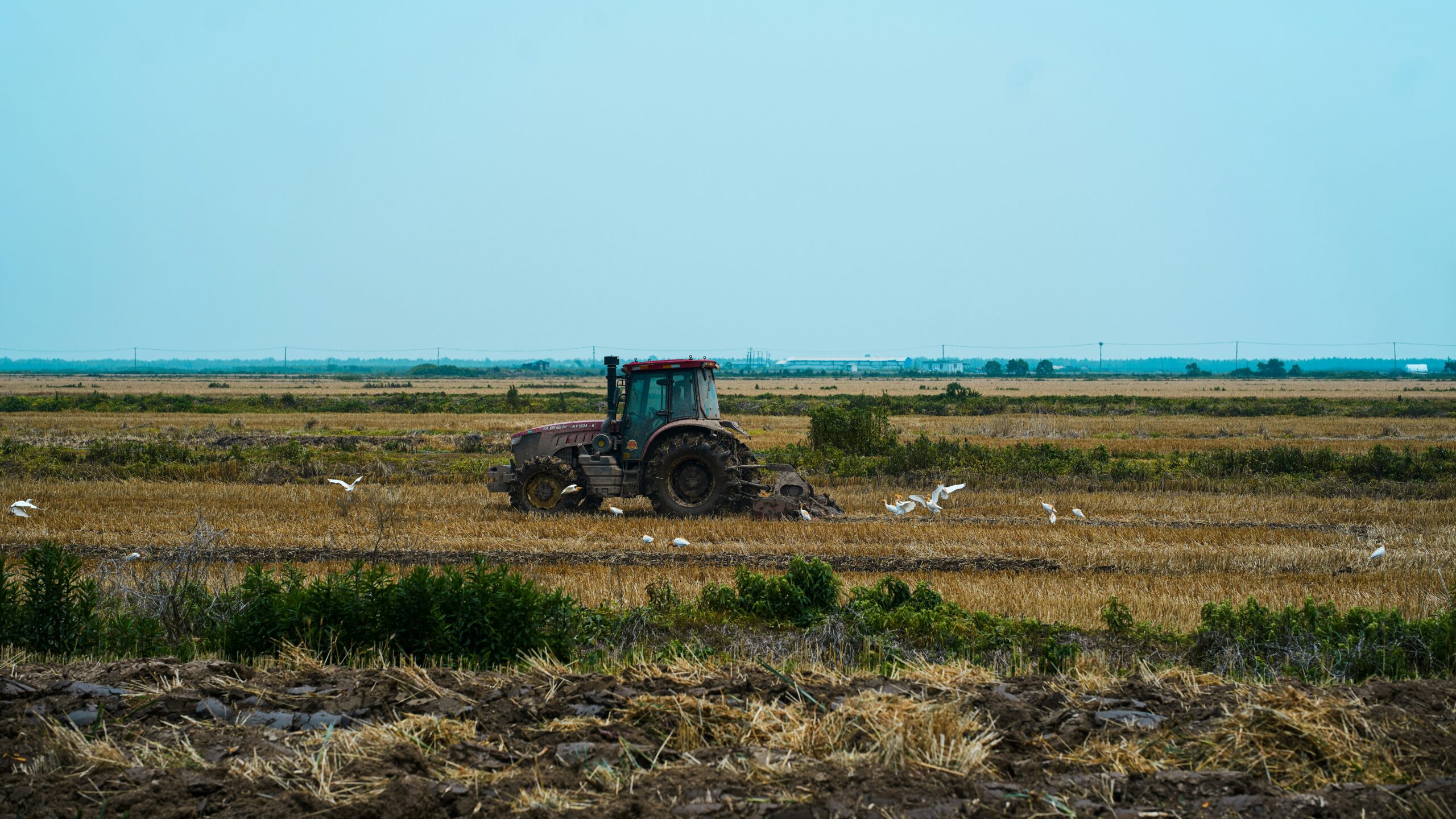Image description: a red tractor ploughing a field, with white birds surrounding it. Image by Tian Dayong / Unsplash.
The Guardian has broken a story on an Environment Agency (EA) insider blowing the whistle on what they describe as a “deliberate and ongoing cover-up” of the public health and environmental dangers of spreading sewage sludge on farmland. This follows on from previous Guardian reporting that millions of tonnes of treated sewage sludge is spread on farmland across the UK every year despite containing forever chemicals, microplastics and toxic waste.
Sewage sludge – the risks
Sewage sludge is the solid byproduct of wastewater treatment. Before the practice was banned in the 1990s, sludge was routinely dumped at sea, whereas now it is spread on land. Sludge-spreading is governed by waste exemptions, allowing companies to store or apply waste on land without an environmental permit, provided certain conditions are met such as avoiding significant risk to water, soil, air or wildlife.
About 87% of the UK’s 3.6m tonnes of sewage sludge is applied to farmland.”
However, apparently the water industry’s own chemicals investigation programme found hormone-damaging nonylphenols and phthalates, the banned carcinogen PFOS, antibiotics, antimicrobials and anti-corrosion chemicals in every sample tested from 11 treatment works. Sludge is laden with PFAS “forever chemicals”, flame retardants, pharmaceuticals, microplastics, and toxic waste from homes and industry. Water companies rebrand this material as biosolids and give or sell it to farmers as a nutrient-rich fertiliser.
The accusation – an EA cover up
The EA insider has reportedly accused the regulator and government of colluding with water companies for years to facilitate the dumping of waste by branding it as soil enrichment. As a result, sludge is spread over vast areas in what is described as “light-touch regulation and minimal scrutiny”, leaving it unmonitored for toxic substances.
Voluntary guidance drawn up in 1998 by the water industry, the safe sludge matrix, sets out what types of treated sludge can be spread and where. “The matrix is still in use,” the source said. “It was written by the water companies and simply accepted by the Environment Agency… This has been going on for decades”.
In 2017 the EA commissioned a study to investigate the risks of sludge. The insider said that although the study was praised internally, it subsequently disappeared and its existence was denied to journalists. A freedom of information request uncovered the study, which revealed flame retardants, dioxins and microplastics had been identified in sludge samples.
After the report’s exposure in 2020, the Department for Environment, Food and Rural Affairs (Defra) and the EA announced a new sludge strategy to modernise the system and bring it under environmental permitting, with promises of better tracking, data and enforcement. However, reportedly nothing has been delivered.
Several sources claimed to the Guardian that both the EA and Defra is resisting regulation to enforce removing contaminants to safe levels as it would cost more than spreading or burning it.
Reaction from the water sector
Water UK acknowledged bioresources may contain Pfas and microplastics but said there are no legal standards or detection methods, and setting such standards is a matter for government and regulators. It said the industry is backing research and calling for coordinated international action.
The EA said it enforces strict controls to prevent sludge from harming soil and water, including thousands of inspections and follow up actions annually. Defra said it had launched an independent water commission to review sludge regulation and is working with the EA, farmers and companies to ensure safe use.
